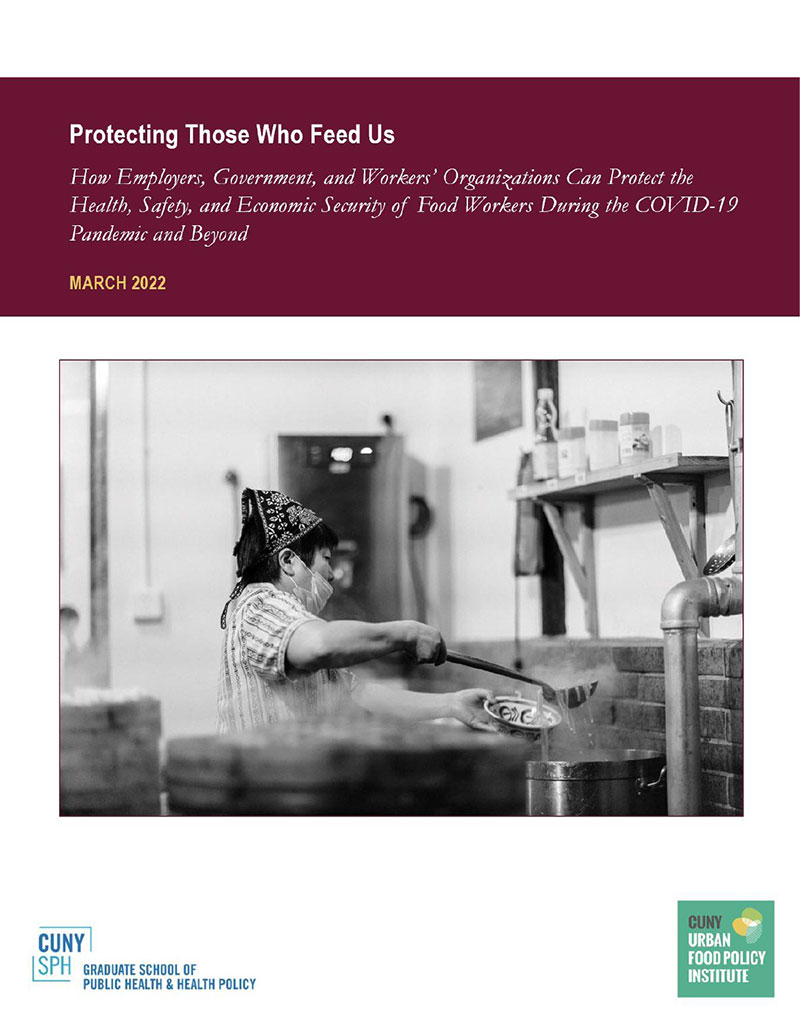Executive Summary
The COVID-19 pandemic has devastated communities within New York City, across the United States, and throughout the world, but its effects have been particularly challenging for “essential workers,” individuals whose labor was necessary for the continued functioning of everyday life. Throughout the pandemic, these workers were expected to continue to show up to their jobs. While all essential workers faced risks from traveling to and from work and as a result of exposure to possibly infected co-workers and customers, food workers in particular faced significant risks to their health and safety. This workforce, largely composed of women, immigrants, and people of color, has historically received low wages, inconsistent hours, little opportunity for advancement, and few benefits. To comprehensively document this unparalleled moment in history and to elevate the diverse voices of the NYC food system, Institute researchers collected data from three sources:
- An online survey of more than 100 frontline NYC food workers
- Interviews with 10 key stakeholders, including staff of labor unions, food businesses, and community-based organizations that support the NYC food workforce
- A literature review of more than 100 relevant news and research articles highlighting the working conditions of food workers in NYC during the pandemic.
Key Takeaways
- Essential workers had trouble obtaining unemployment benefits and were unable to leave their jobs if they felt unsafe.
- City, state, and federal governments provided limited guidance regarding COVID safety practices. Therefore, most workers lacked access to a full range of protections.
- Though food workers had access to paid sick leave, many were hesitant to use it. At the same time, fewer than half of surveyed workers reported quarantine mandates or exposure alerts by their employers.
- The mental toll of COVID-19 on NYC food workers was just as heavy as the physical health effects. Almost every surveyed worker reported elevated levels of job-related stress during the pandemic.
- More food workers are unionizing, and public approval of labor unions is up, creating future opportunities to better protect these workers.
- Food sector employers are currently experiencing a labor shortage. Meanwhile, food workers are asking for increased wages and benefits, including health insurance and childcare, to recover from COVID-19 and sustain their lives.
- The NYC food workforce is composed mostly of people of color and immigrants, and the Black Lives Matter movement has increased the public’s awareness of racial inequities, including those present in the food industry. Companies are increasingly launching anti-racist and Diversity, Equity, and Inclusion (DEI) initiatives.
Suggested citation
Chong, Valerie Peter; James, Charita Johnson; Fraser, Katherine Tomaino; Brown, Rhonda; Ignacio, Karla; Willingham, Craig; Cohen, Nevin; and Freudenberg, Nicholas. Protecting Those Who Feed Us: How Employers, Government, and Workers’ Organizations Can Protect the Health, Safety, and Economic Security of Food Workers During the COVID-19 Pandemic and Beyond. CUNY Urban Food Policy Institute, March 2022.
